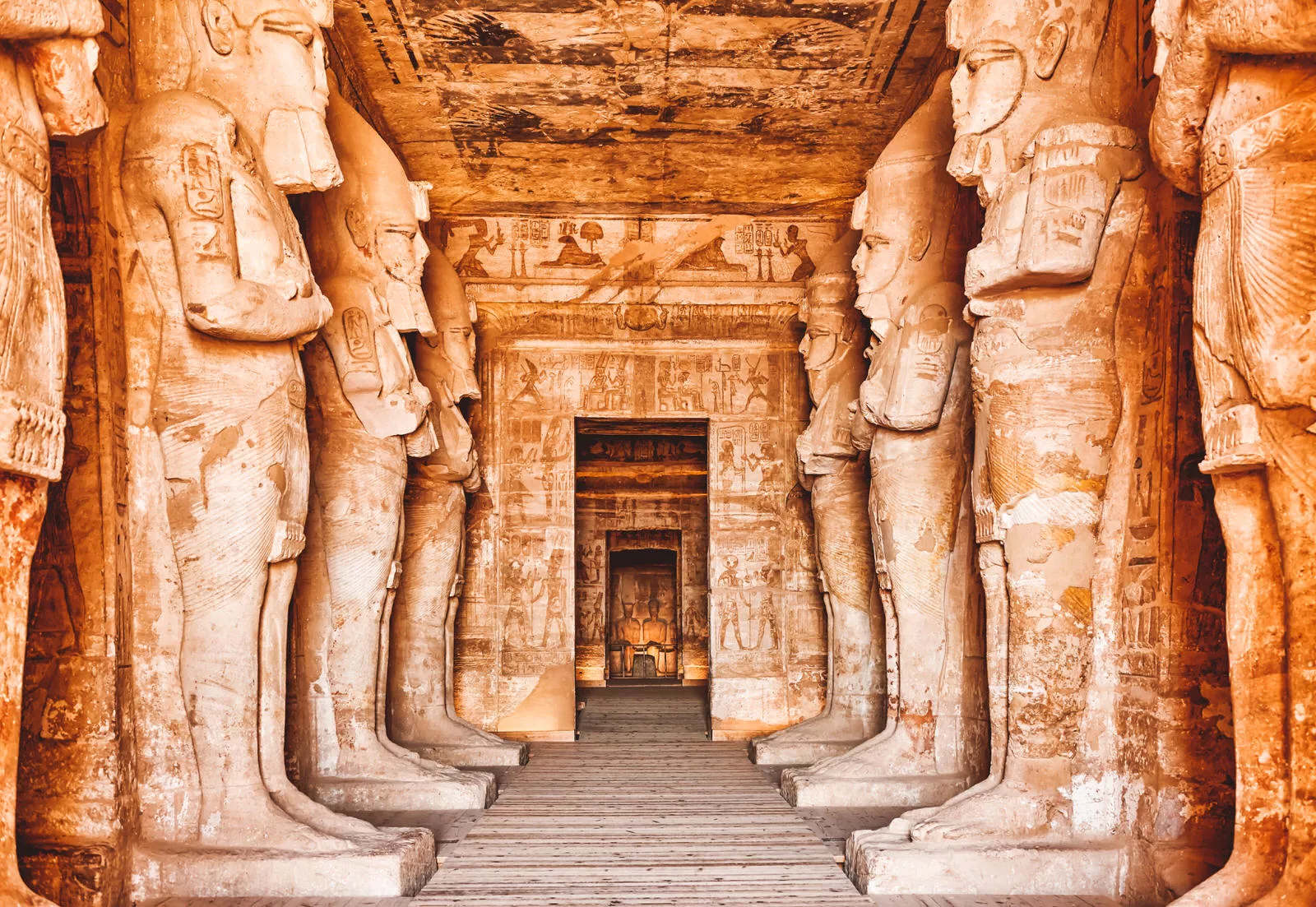Abu Simbel Temple
Nestled in Egypt’s deep south, Abu Simbel Temple is more than a historical monument—it’s a stunning symbol of ancient Egypt’s power, spirituality, and genius. Built over 3,000 years ago by the mighty Pharaoh Ramses II, the temple continues to leave visitors in awe with its colossal statues, precise astronomical alignment, and breathtaking artistry. Whether you're a history lover or a curious traveler, visiting Abu Simbel is a journey through one of humanity’s greatest civilizations.

Where Is Abu Simbel Temple Located?
Abu Simbel lies in the Nubian desert on the western bank of Lake Nasser, around 230 km southwest of Aswan. Its location was no accident—this was Egypt’s gateway to ancient Nubia and a strong statement of dominance during the 13th century BC.
A Glimpse into the History of Abu Simbel
When Was Abu Simbel Built?
The temples were carved directly into the mountainside during the reign of Pharaoh Ramses II (c. 1264 BC), taking nearly 20 years to complete. The site includes two temples:
- The Great Temple, dedicated to Ramses II and three powerful gods.
- The Small Temple, honoring Queen Nefertari and the goddess Hathor.
This grand project was both a political and spiritual statement, blending art, religion, and architecture to impress both Egyptians and Nubians.
Architectural Highlights of Abu Simbel
The Great Temple's Façade
What makes Abu Simbel instantly iconic are the four colossal statues of Ramses II, each over 20 meters high, carved into the rock face. Surrounding them are smaller figures of his family—his mother, wife, and children—emphasizing the divine nature of his rule.
Inside the Temple
Stepping inside reveals vast chambers with massive Osiride pillars, intricate wall carvings, and battle scenes like the legendary Battle of Kadesh. The inner sanctuary features seated statues of Ra-Horakhty, Ptah, Amun, and Ramses himself—perfectly aligned with the sun during the solar festivals.

The Solar Alignment Phenomenon
Twice a year, on February 22 and October 22, sunlight pierces through the temple’s corridor to illuminate the inner sanctuary statues. These dates mark Ramses II’s birthday and coronation, highlighting the temple’s astronomical precision and spiritual significance.
The Relocation: A Global Rescue Operation
In the 1960s, the construction of the Aswan High Dam threatened to submerge Abu Simbel under Lake Nasser. With UNESCO's support, a massive international effort relocated the entire complex 65 meters higher and 200 meters back. This engineering feat, completed between 1964–1968, is considered one of the most successful preservation projects in modern history.
10 Fascinating Facts About Abu Simbel
- Built in the 13th century BC by Ramses II.
- The Great Temple is 30 meters deep.
- Each statue at the entrance is over 20 meters tall.
- Sunlight reaches the sanctuary only twice a year.
- One statue (of Ptah) remains in darkness—symbolically.
- The temples were buried in sand for centuries.
- Rediscovered in 1813 by Johann Ludwig Burckhardt.
- Fully uncovered in 1817 by Giovanni Belzoni.
- Relocated in the 1960s due to rising water levels.
- Now a UNESCO World Heritage Site.
Q&A: All You Need to Know About Abu Simbel
Why is the Abu Simbel Temple important?
It represents Egypt’s political, spiritual, and engineering brilliance. It was a message of power to both Egyptians and Nubians—and today, to the world.
Who are the four gods inside Abu Simbel?
Inside the Great Temple, you’ll find statues of:
- Amun – God of creation
- Ra-Horakhty – Sun god
- Ptah – God of craftsmen (always in shadow)
- Ramses II – Deified as a god
Why is Abu Simbel so special?
Because of its architectural beauty, solar alignment, massive size, and the fact that it was moved piece by piece to save it from flooding.
Visiting Abu Simbel Today
You can reach Abu Simbel by short flights from Aswan or organized tours by Afro Asian Travel. The best time to visit is during the cooler months (October to April), especially during the solar festivals. Combine your visit with a Nile Cruise or a day tour from Aswan for a full historical experience
Plan Your Trip to Abu Simbel with Afro Asian Travel
At Afro Asian Travel, we specialize in organizing private tours, group packages, and luxury experiences to all major sites in Egypt—including Abu Simbel. Our itineraries are customizable and perfect for all age groups.
Contact us now to start planning your unforgettable Egyptian adventure!







